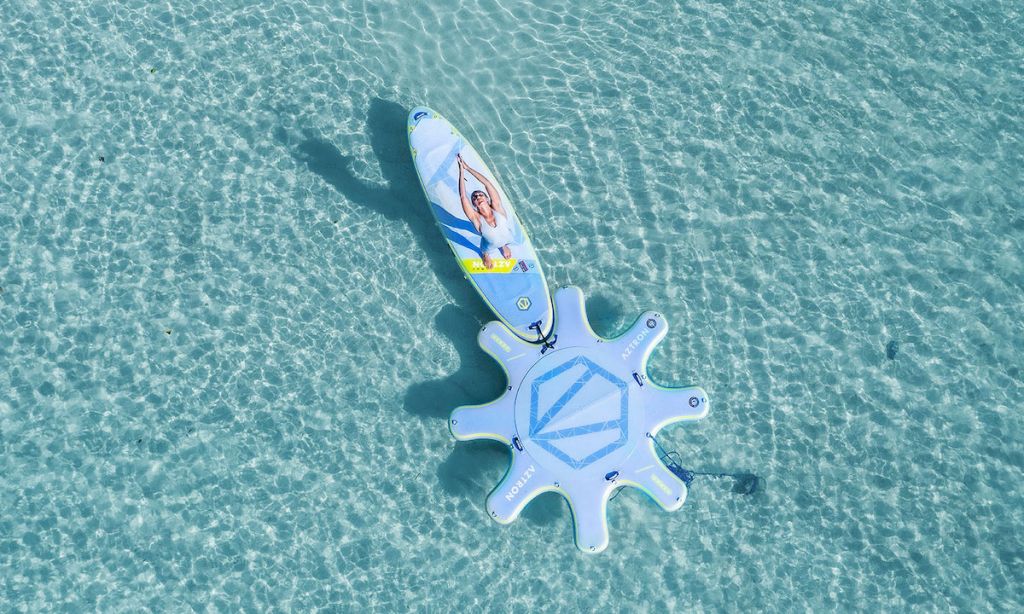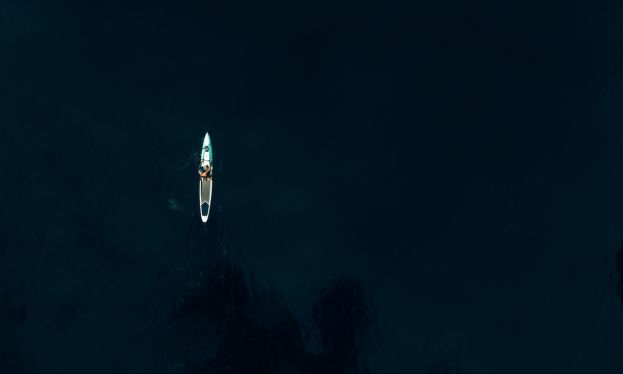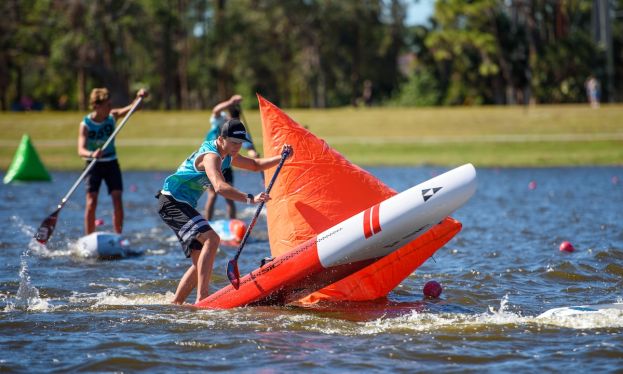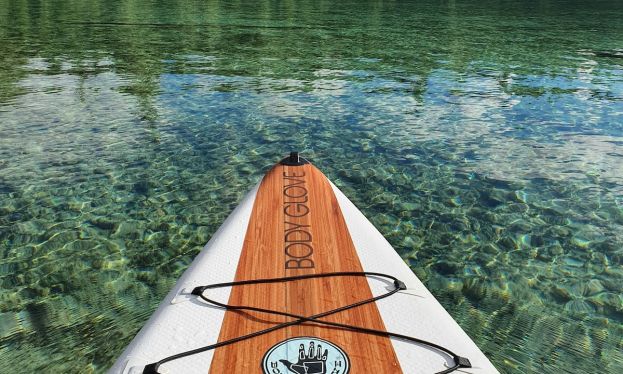3 Foundational Tips for Stand Up Paddle Yoga
- Written by Staff
- Published in Tips
- Comments::DISQUS_COMMENTS
Photo courtesy: Aztron Sports.
Breathe. Focus. Center.
Breathe.
Regardless of experience level, always check in with your breath first. Why? Our breath is always real and honest with us. If we are nervous or excited it is likely shallow and rapid, if we are calm and focused it is slow and deep. The latter is what we want to cultivate to find our balance on the board. Slow focused breathing naturally relaxes you and often releases tension you may be harboring somewhere in the body.
“Deep breathing is one of the best ways to lower stress in the body. This is because when you breathe deeply, it sends a message to your brain to calm down and relax. The brain then sends this message to your body. Those things that happen when you are stressed, such as increased heart rate, fast breathing, and high blood pressure, all decrease as you breathe deeply to relax.” - U of M Health
Focus.
 Photo courtesy: POP Board Co.
Photo courtesy: POP Board Co.
In yoga this is usually called our ‘dristhi’ which can refer to our focus or gaze. Once breath is stabilized this comes easy. Your body will follow where your eyes go. As you rise slowly whether in a lunge or standing posture let your gaze come along with you. The same principle applies for your decent back down, let your eyes be your guide.
In Ashtanga and other schools of yoga, nine specific drishtis are used and described:
- NasagraiDrishti, gaze at the tip of the nose, as used in Upward-Facing Dog, Chaturanga, and standing forward fold asanas.
- AngustaMaDyaiDrishti, gaze at the middle of the thumbs, as used in Warrior I and Chair.
- Pahayoragrai Drishti, gaze at the toes, as used in Hand to Toe pose and most seated forward bends.
- NabiChakraDrishti, gaze at the navel, as used in Downward Facing Dog.
- HastagraiDrishti, gaze at the hands, as used in Triangle and Warrior II.
- ParsvaDrishti (left), gaze to the left side, as used in seated spinal twists.
- ParsvaDrishti (right), gaze to the right side.
- UrdhvaDrishti, gaze upwards, as used in Warrior Angle, Balancing Half-Moon, and Prayer Twist.
- Naitrayohmadya or BroomadhyaDrishti, gaze at the third eye (ajna chakra) or forehead, as used in Fish, Upward Forward Fold, and Reverse Warrior II.
- Timothy Burgin Yoga Basics
Center.
 Photo courtesy: Surftech
Photo courtesy: Surftech
Here we don’t mean just mentally, physically center yourself with your board. If you distribute your weight with the weight of the board you will find it much easier to balance. A couple examples: Downward Facing Dog and Crescent Lunge. In Downward Facing Dog or Crescent Lunge we want our hips over the handle as that is our center of gravity and the handle is the center of gravity of the board. If you are too far forward the tail might start to lift, too far back the nose. Think of where your body is relative to the rails and handle of the board.
Now it’s your time to play! Breathe. Focus. Center. The rest of the practice will develop from there.
Article From the SUP Yoga Instructers of Sunchase SUP
Dana Mitchell and Kayla Mulford

Staff
Submit your news, events, and all SUP info, so we can keep promoting and driving the great lifestyle of stand up paddling, building its community, and introducing people to healthier living.
Website: supconnect.com Email This email address is being protected from spambots. You need JavaScript enabled to view it.





